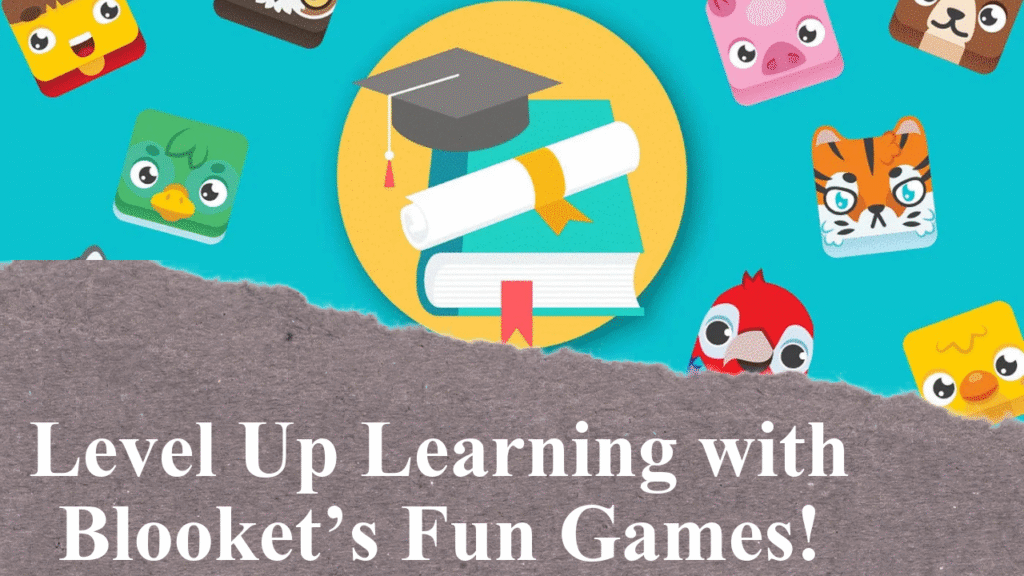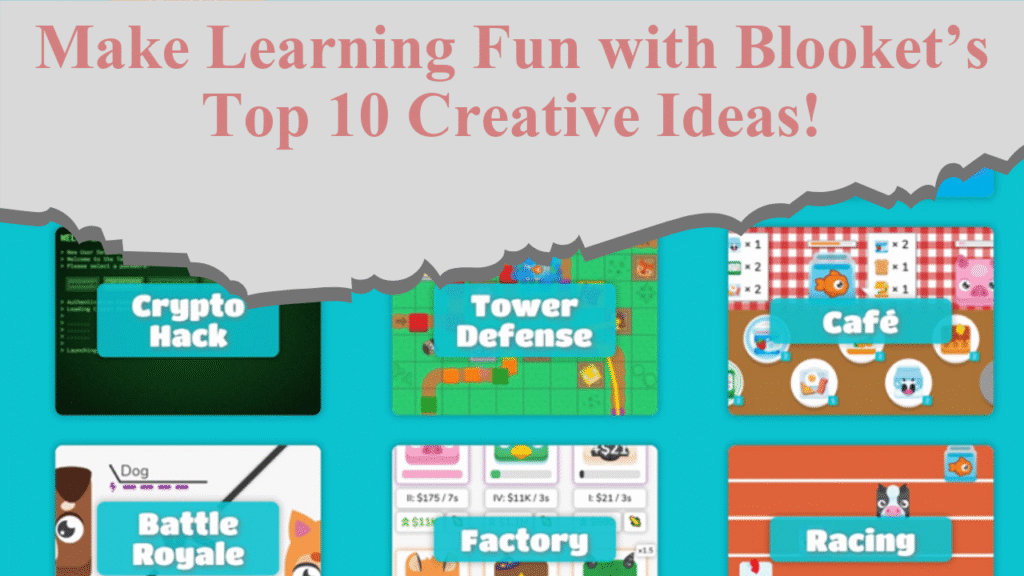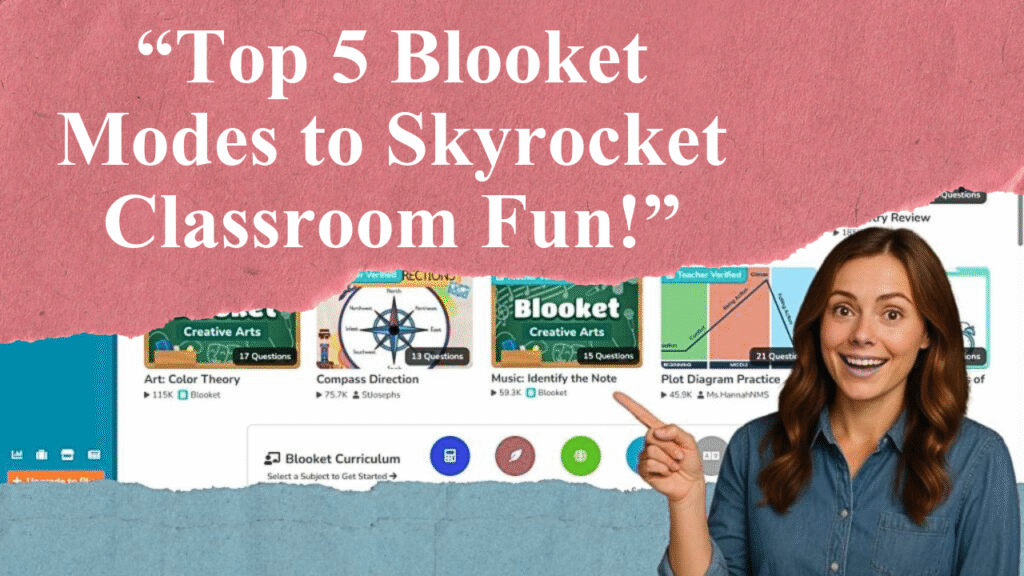Blooket transforms learning with engaging, game-based tools that boost student success. This article explores how Blooket’s customizable quizzes, real-time feedback, and diverse game modes enhance classroom engagement, promote collaboration, and improve retention. Discover practical strategies for teachers to leverage Blooket’s analytics and interactive features to drive academic achievement across subjects.
Harnessing Blooket’s Gamified Tools for Classroom Success
Blooket is a dynamic, web-based platform that merges education with gamification, offering teachers and students an interactive way to review and master content. Launched as a fresh alternative to tools like Kahoot! and Quizizz, Blooket stands out with its variety of game modes, customizable question sets, and real-time analytics, making it a powerful tool for fostering student success across diverse subjects and grade levels.
Customizable Question Sets for Targeted Learning
Teachers can create tailored question sets or choose from thousands of pre-made sets in Blooket’s library, covering subjects like math, science, history, and language arts. For example, a high school Spanish teacher used Blooket to pre-teach vocabulary for Kristy Placido’s Noche de oro, creating engaging quizzes that exposed students to key terms before reading. This flexibility allows educators to align content with curriculum goals, ensuring relevance. Blooket also supports importing sets from Quizlet, streamlining preparation. Teachers can design multiple-choice, true/false, or open-ended questions, with options to include visuals for enhanced comprehension, such as fraction diagrams for math or cultural images for language studies.
Diverse Game Modes to Engage Every Learner
Blooket offers over a dozen game modes, including Gold Quest, Tower Defense, Café, and Battle Royale, each catering to different learning styles. In Gold Quest, students answer questions to collect virtual gold, fostering quick thinking. Tower Defense encourages strategic collaboration, while Café simulates running a business, blending fun with problem-solving. These modes keep students engaged by making learning feel like a game, not a chore. For instance, a middle school math teacher reported students eagerly practicing fractions via Factory mode, where they used “Glitches” to disrupt competitors, adding excitement without sacrificing educational value. Teachers can adjust settings to de-emphasize speed, ensuring inclusivity for students with slower processing or special needs.
Real-Time Feedback for Immediate Improvement
Blooket’s real-time feedback is a game-changer for both students and teachers. As students answer questions, they receive instant corrections, allowing them to address misconceptions on the spot. Teachers access detailed performance reports via the Blooket Dashboard, which highlight individual and class-wide strengths and weaknesses. For example, after a science quiz, a teacher can identify students struggling with concepts like photosynthesis and provide targeted support. This data-driven approach enables educators to adapt lessons dynamically, ensuring no student is left behind. In a 2023 study by the Brookings Institution, real-time data was identified as critical for addressing learning gaps, and Blooket’s analytics align with this need.
Promoting Collaboration and Soft Skills
Blooket’s multiplayer modes foster teamwork and communication. In modes like Blook Rush, students work in teams to answer questions while strategizing attacks or defenses, building a sense of community. A teacher on Reddit noted that Blooket’s Crypto Hack mode created a lively classroom where students debated answers, shouting “It’s passive!” to correct peers, enhancing both learning and class culture. These interactions develop soft skills like collaboration and resilience, preparing students for real-world challenges. The platform’s competitive elements, when managed carefully, encourage participation without overwhelming less confident learners.
Accessibility and Inclusivity
Blooket is free to use, with a user-friendly interface requiring no technical expertise. The free version supports up to 60 students per session, while paid plans like Blooket Plus ($2.99/month annually) offer advanced reports and larger sessions. Its web-based design ensures accessibility on any internet-connected device, making it ideal for in-class, remote, or hybrid learning. Teachers can assign games as homework, allowing students to practice independently, though younger students (under 13) should avoid creating accounts due to privacy laws. Blooket’s inclusive design accommodates diverse learners, with game modes appealing to visual, strategic, or competitive preferences.
Practical Applications Across Subjects
Blooket’s versatility shines in various subjects. In math, teachers create sets for word problems or geometry, using visuals to aid understanding. For language arts, vocabulary and grammar quizzes become interactive challenges. In history, true/false questions about events or figures spark engagement. A 2024 Teachers Pay Teachers resource highlighted Blooket sets aligned with Alberta’s Grade 5 science curriculum, including study sheets and tests, showing its adaptability for structured assessments. Teachers can also involve students in creating question sets, increasing investment in learning.
Challenges and Best Practices
While Blooket excels in engagement, it has limitations. It primarily supports multiple-choice questions, which may not suit complex topics requiring written responses. Some teachers note that poorly designed questions (e.g., only one numerical answer option) can reduce effectiveness. To maximize impact, educators should start with simple sets, review analytics regularly, and vary game modes to maintain interest. Encouraging student input on questions fosters ownership, while balancing competition with collaboration ensures a supportive environment.
Data-Driven Success in Action
Blooket’s impact is evident in real-world examples. At Long An College of Education in Vietnam, students used Blooket to learn vocabulary, reporting higher engagement and retention. A 2025 Vocal Media review noted improved test scores and participation in classrooms using Blooket, attributing success to its gamified approach. By blending fun with learning, Blooket helps students retain information longer, with game-based repetition reinforcing key concepts.
Disclaimer: This article is based on educational reports, teacher reviews, and platform analyses from sources like Common Sense Education, Brookings Institution, and Teachers Pay Teachers. Tips reflect best practices shared by educators. Always verify platform terms, especially for student privacy, before use.




